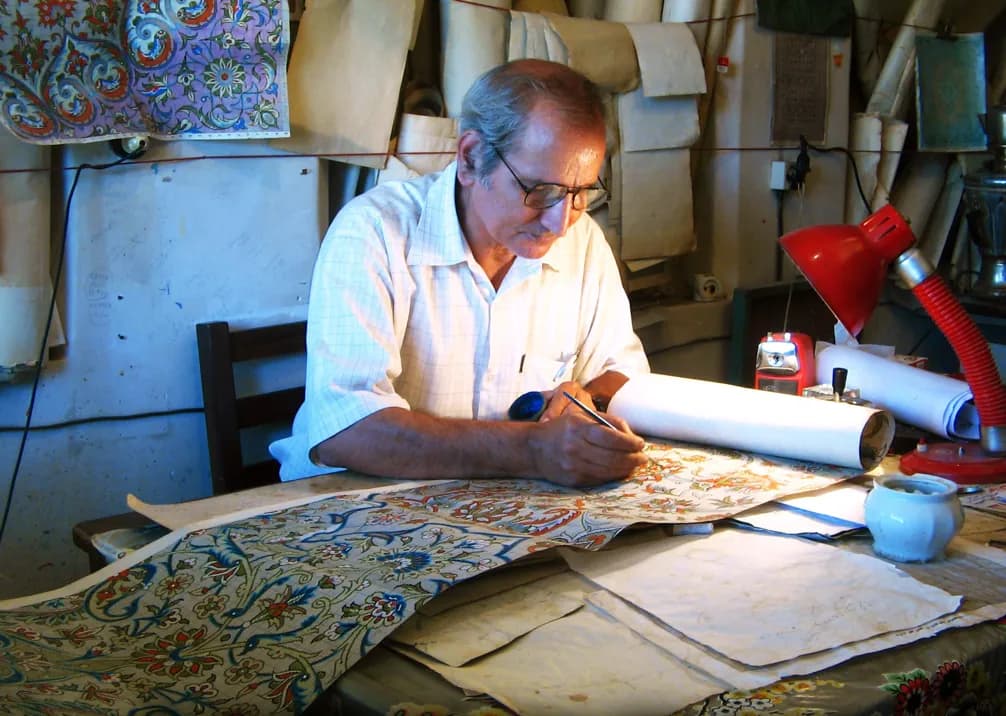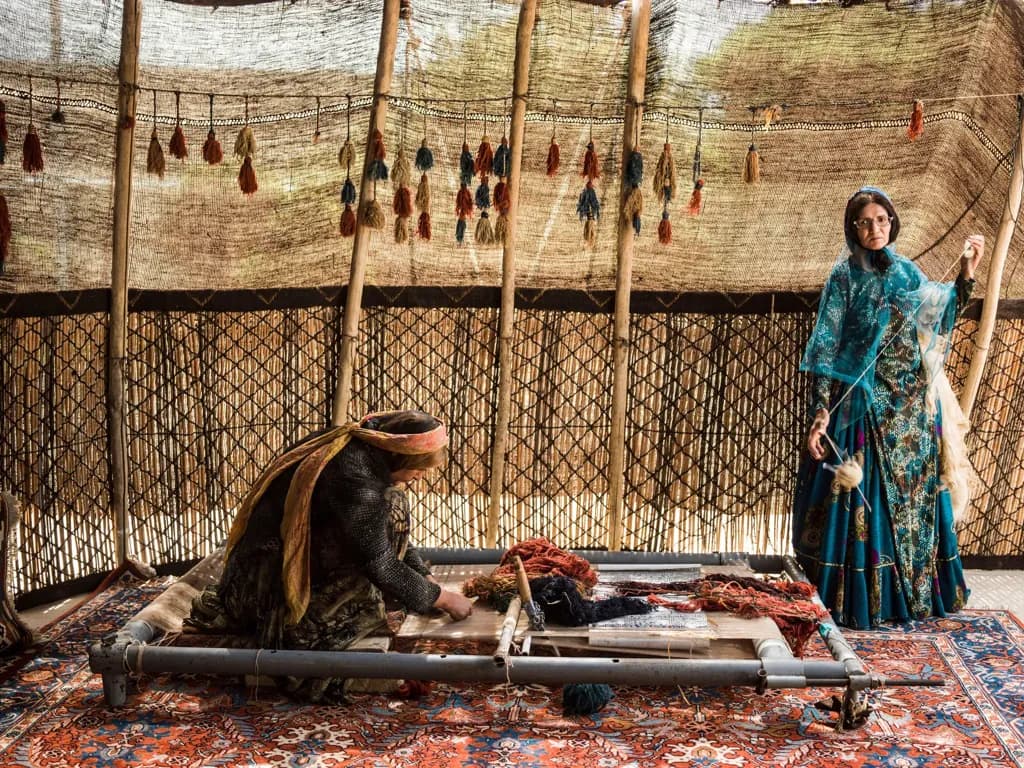Nasrabad rugs, originating from a small village near Isfahan, represent a distinctive local interpretation of classical Persian carpet traditions. These pieces combine elements of urban sophistication with regional character.
The defining characteristics of Nasrabad carpets include their intricate floral patterns and medallion designs, often executed with a distinctive local flair. These rugs typically feature central medallions surrounded by detailed floral motifs and arabesques, arranged in balanced compositions.
The color palette features rich, warm tones with deep reds and blues predominating, often complemented by ivory backgrounds and subtle accents of gold and green. The dyes used create colors with excellent aging characteristics and resistance to fading.
The wool used in Nasrabad carpets is locally sourced, known for its durability and luster. This quality wool, combined with traditional weaving techniques, creates pieces with excellent durability and a distinctive feel underfoot.
Technically, these rugs feature moderate to high knot counts, typically ranging from 120-300 KPSI (knots per square inch). The foundation is usually cotton, providing excellent structural stability and longevity.
Modern Nasrabad production maintains strong links to traditional methods while incorporating subtle adaptations to contemporary tastes. These pieces often feature slightly simplified versions of classical patterns that work well in modern interiors while preserving their authentic character.
The investment value of Nasrabad carpets lies in their combination of artistic merit and practical durability. Each piece represents a significant cultural heritage, where local interpretations of classical designs create distinctive and enduring works of textile art.
These rugs are particularly valued for their versatility in both traditional and contemporary settings. Their elegant patterns and warm colors provide sophisticated accent pieces that work especially well in modern design contexts.
Each Nasrabad rug represents generations of weaving tradition, where patterns and techniques have been preserved through centuries of cultural evolution. These pieces continue to be prized for their combination of artistic excellence and structural integrity.



























